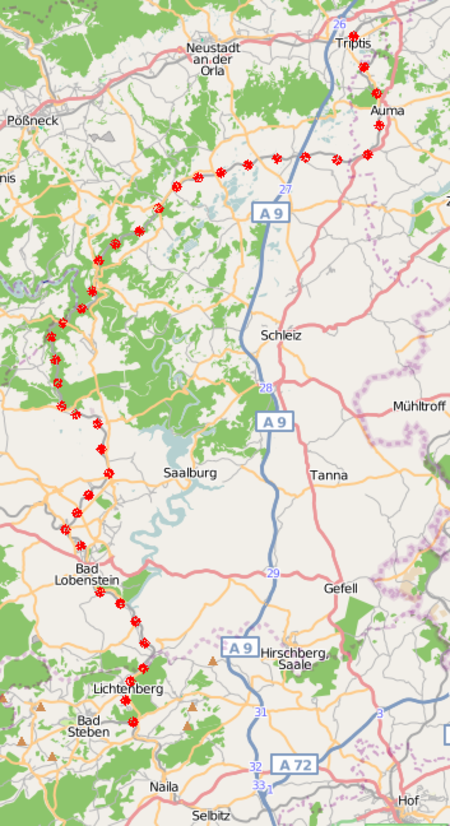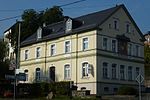Triptis–Marxgrün railway
Branch lines in BavariaBuildings and structures in Hof (district)Buildings and structures in Saale-Orla-KreisCommons link is defined as the pagenameFranconian Forest ... and 1 more
Railway lines in Thuringia

The Triptis–Marxgrün railway is a branch line in Germany that runs through the states of Thuringia and Bavaria, and which was originally built and operated by the Prussian state railways. It ran from Triptis via Ziegenrück, Bad Lobenstein and Blankenstein to Marxgrün. The only section still in service today is the stretch of line between Ebersdorf-Friesau and Blankenstein. The Thuringian section is also called the Oberlandbahn ("Oberland railway"); the Bavarian section the Höllentalbahn ("Hell Valley Railway").
Excerpt from the Wikipedia article Triptis–Marxgrün railway (License: CC BY-SA 3.0, Authors, Images).Triptis–Marxgrün railway
Humboldtstraße,
Geographical coordinates (GPS) Address Nearby Places Show on map
Geographical coordinates (GPS)
| Latitude | Longitude |
|---|---|
| N 50.384444444444 ° | E 11.690833333333 ° |
Address
Höllental
Humboldtstraße
95119
Bavaria, Germany
Open on Google Maps







